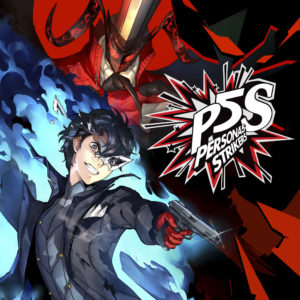 System: Played on PS4 Slim
System: Played on PS4 Slim
Completed: Yes, with most incidental side content, in just under 45 hours
In a hurry? Here’s the gist: Persona 5 Strikers is an excellent action RPG, and a proper sequel to Persona 5. It’s a much leaner experience than that game, has a slow start, and what feels like a backward difficulty curve, but these don’t diminish the fun, fast-paced action, excellent use of real-world locations or the charm of seeing the Phantom Thieves return to action. A word of caution, however: those not familiar with Persona 5 from the game or anime will probably be too lost by the story to properly enjoy the game.
Before starting the full review, I will say that much of one’s enjoyment of the game will depend on being familiar with the original Persona 5 story and ideally, its gameplay mechanics. If you’ve not played Persona 5, or watched the anime, those are definitely where you should begin. The game and its enhanced remake, Royal, are among the best turn-based Japanese RPGs of at least the last console generation. The anime (available on Crunchyroll) is only alright—if you’ve played Royal but not the original release, it can clue you into the story differences between them (Strikers involves the original game’s events, not the version in Royal). Untagged spoilers for Persona 5 will be present after the jump, and I’ll be assuming familiarity with the series’ basic concepts.
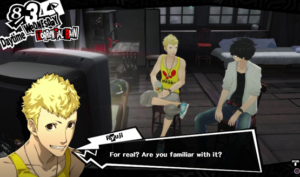
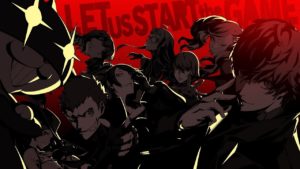
Persona 5 Strikers, Omega Force and P Studio’s action spinoff to 2016–17’s Persona 5, has finally arrived in the West, and despite a few setbacks, is a worthy successor for those looking for a further adventure of the Phantom Thieves.
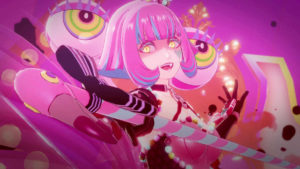
Strange occurrences with a fashion icon in Shibuya send the Phantom Thieves on another adventure.
Persona 5 Strikers opens four months after the end of the first game, with Joker coming back to Tokyo to meet up with the Phantom Thieves and take a road trip over summer vacation. Events conspire such that the Thieves discover another conspiracy involving the Metaverse, and their road trip is partially repurposed into traveling the country to hunt down the culprits.
The game itself is definitely a leaner affair than the original, whose usual runtime is more than double that of Strikers. A big part of this is that the game is much more linear—the social simulation of the confidant system is completely gone and days pass according to the main plot rather than adding time management for optional activities. There are only a few cases where there’s a choice of which character to interact with during some free time, as opposed to being a major mechanic like in Persona 5. To be fair, this fits the game better—the group is all traveling together, and they’re already an established, tight-knit group of friends, rather than the strangers thrown together and forced to figure things out, like in the original.
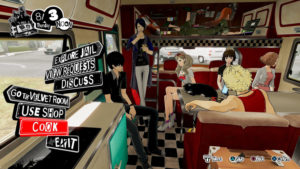
The Phantom Thieves, getting ready to enjoy some of Joker’s delicious cooking in their trusty van.
It’s really a treat to spend more time with the Thieves, and that’s no small part of the game’s appeal. Especially since some time has passed in-universe, too—Makoto and Haru are college students, Ann, Ryuji and Yusuke have started settling into their rebuilt school lives and Futaba’s social issues have started to soften. It’s so rare, especially in franchises where character merchandise and marketability is such a profitable thing, to see characters change, develop, start different phases in their lives, etc. It’s a delight to see that here, and it’s heartwarming to see that the last adventure really changed the characters for the better. The new characters introduced in this installment are also interesting, fitting in well with the tone of the series and tying directly into the plot. Similar to Persona 5, the plot feels timely and relevant and keeps the player cheering for the Phantom Thieves to steal the hearts of the wicked.
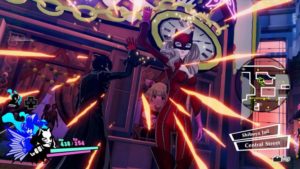
Switching the character you control gives a temporary bonus.
The meat of the gameplay is a cross between the typical Warriors-style gameplay of the majority of Omega Force’s output with some RPG elements from Persona. Generally, before entering the game’s adventure areas (“Jails” here, rather than the “Palaces” of Persona 5), some time will be spent playing as Joker with basic overworld exploration with shops, NPC dialogue, optional encounters with the other Phantom Thieves and storyline segments to advance the plot—pretty similar to the regular day-to-day sequences in Persona 5, just without the time limit. Once in the Jail, the action gameplay takes over. Players choose a battle party of four characters from the larger roster—of which is controlled directly by the player—who can switch between them with the directional pad and the others controlled by AI. Each character has a unique moveset with their variety of melee weapons, a unique ranged weapon and access to a variety of magical spells based on their persona, accessed by a menu that pauses the action to allow for precise targeting. Checkpoints found throughout the Jail allow for fast travel, saving and switching active party members. Multiple experience systems increase the Phantom Thieves’ power as play progresses, as does a simple inventory and equipment system.
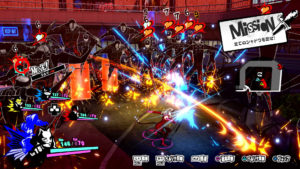
The combat is fast and frantic, with hordes of enemies in Warriors-series style.
Overall, I found the game pretty easy playing on normal, with a difficulty curve that seems to go backwards, getting much easier as you play, rather than more challenging. I ran into some challenges early on while still getting the hang of the controls, movesets and spell mechanics, not helped by the slow start and pacing of the tutorials. Once figured out, the game became fairly easy, with even boss fights up to and including the final boss being of trivial difficulty assuming a good mix of elemental powers in the party and a decent supply of healing items. Also, unlike in Persona 5, there’s also no drawback to returning from the Jail to the real world, except for monsters respawning. I felt like this would make the combats trivially easy, so I tried to increase the challenge by staying in the Jail for as long as I could manage without running out of resources—a playstyle familiar to Persona 5 veterans—which helped, but between having to return for plot reasons, to turn in side quests, etc., this very rarely got me to my limit. As always, I assume postgame content has some higher difficulty, as would hard mode or New Game+, but I haven’t gotten to those yet, and they are beyond the scope of a standard play review. Overall, though, I didn’t mind the reasonably short length for an RPG-adjacent game as well as the impressive assortment of enemies that mostly switch out before any become boring. It kept the combat exciting and kept me switching characters to match the weaknesses of a new area.
Unfortunately but not unexpectedly, the game barely spends any time summarizing previous events or situations, which leaves Strikers hard to recommend for those who’ve not played the original or Royal. However, Persona 5 Strikers is easy to recommend to fans of the original game. While it misses out on the fun of that game’s social mechanics and deeper storylines, it still achieves a satisfying amount of characterization in its much shorter runtime. The new characters and scenarios are interesting, and the fast-paced combat is fun. It’s easier than I’d like, with a weirdly paced beginning, but neither of those is exactly uncommon with Japanese RPGs and are made up for by plot, characters and the touristy fun of seeing different regions of Japan and some of their landmarks. If you’re a fan of the Phantom Thieves, check out a copy or place a hold today!
